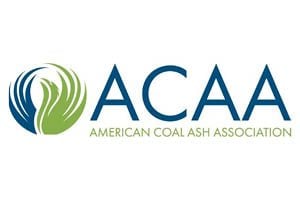Your cart is currently empty!
Further progress on the Product Category Rule (PCR) for Supplementary Cementitious Materials
Product Category Rule (PCR) for supplementary cementitious materials (SCM) progressed to another important stage prior to publication. The Ash Development Association of Australia, CEO Craig Heidrich along with two (2) other international independent experts completed a review of the draft PCR in September for the American Coal Ash Association.

Why are PCR important
Product Category Rules (PCR) can be thought of as the “grammar” of Environmental Product Declarations (EPD) for the construction industry. J
ust as grammar provides a set of rules for constructing sentences and communicating effectively, PCR provides a standardized approach to environmental assessment and reporting.
In the same way that good grammar ensures that a message is clear, concise, and easily understood, PCR ensures that the environmental performance of construction products is assessed using a consistent methodology, making the results reliable, consistent, and comparable.
This allows designers, contractors, and consumers to make informed decisions based on accurate and transparent information.
PCR next steps
The ACAA in partnership with Smart EPD, and other stakeholders have developed the PCR to ensure the ISO International Standards are followed and provide clear and concise evaluation methods for cement/concrete manufacturers and pozzolan users.
After a period of public comment on the latest draft, the review panel that developed the PCR assembled to discuss and consider the 152 comments that were received from stakeholders.
With response to all comments required, the panel’s responses are expected to be completed by mid-January.
Once the PCR is finalised, it can then be used to create an Environmental Product Declaration (EPD).
An EPD is an independently verified and registered document that communicates transparent and comparable data and other relevant environmental information about the life-cycle environmental impact of a product. EPDs expire after 5 years.
Once this has occurred, the PCR must be revised and updated in order to create a new EPD.
The ACAA is also working with the Portland Cement Association (PCA) to obtain a grant from the U.S. Environmental Protection Agency (EPA) to create a PCR which would cover cement, coal ash, natural pozzolans, and slag cement.
The Natural Pozzolan Association and the Slag Cement Association are also working in conjunction with the ACAA & the EPA on this grant.
The U.S. Environmental Protection Agency has allocated funds from the Inflation Reduction Act, and are eligible for carbon reducing initiatives.
The creation of product specific EPD’s would be authorised for funding once the PCA grant is approved. Several organisations have already had success in creating EPD models that can be modified for specific products at reasonable costs.
Applications for the grants are due in January 2024, with funds expected to be available in Q3 2024.
